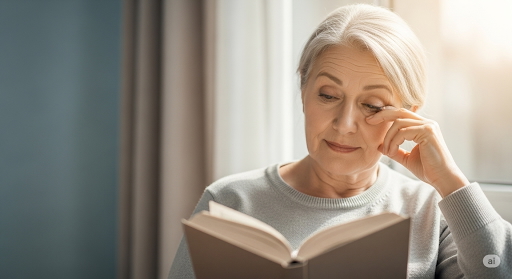Dry, gritty, irritated eyes aren’t just uncomfortable—they can also have a significant effect on your quality of life. For many older adults, dry eye disease is a daily struggle, but one that is often brushed off as “just part of getting older.”
Understanding and treating dry eye can make a big difference to your comfort, vision, and independence.
Why Dry Eye Gets Worse With Age
As we age, several factors contribute to decreased tear production and tear film instability. These include:
- Hormonal changes (especially post-menopause)
- Reduced meibomian gland function (the meibomian glands lubricate the eyes)
- Medications like antihistamines, diuretics, and antidepressants
- Inflammatory conditions like blepharitis and rosacea
- Demodex ocular infestation. Seen in 84% of patients 60 years old and older and 100% in 70 years old and older (Liu et al).
Dry Eye Symptoms and Treatment
Symptoms to Watch For
Common symptoms of dry eye include:
- Burning or stinging
- Grittiness or a feeling like something’s in the eye
- Fluctuating blurry vision
- Tearing (yes, watery eyes can mean dry eye!)
- Sensitivity to wind or smoke
Treatment Options
Fortunately, a number of treatments are available:
- Artificial tears (preservative-free preferred)
- Meibomian gland treatments like RF and IPL
- Anti-inflammatory eye drops (like cyclosporine or lifitegrast)
- Eyelid hygiene for blepharitis
- Omega-3 fatty acids and nutrition changes
- Xdemvy eye drops for Demodex reduction
- Amniotic Membrane
Find Relief for Your Symptoms
You don’t have to live with dry eyes. The right treatment can bring relief, improve clarity, and help you stay active and independent. Book a dry eye evaluation with one of our eye doctors at Monarch Bay Optometry in Dana Point to find the best option for your eyes.


